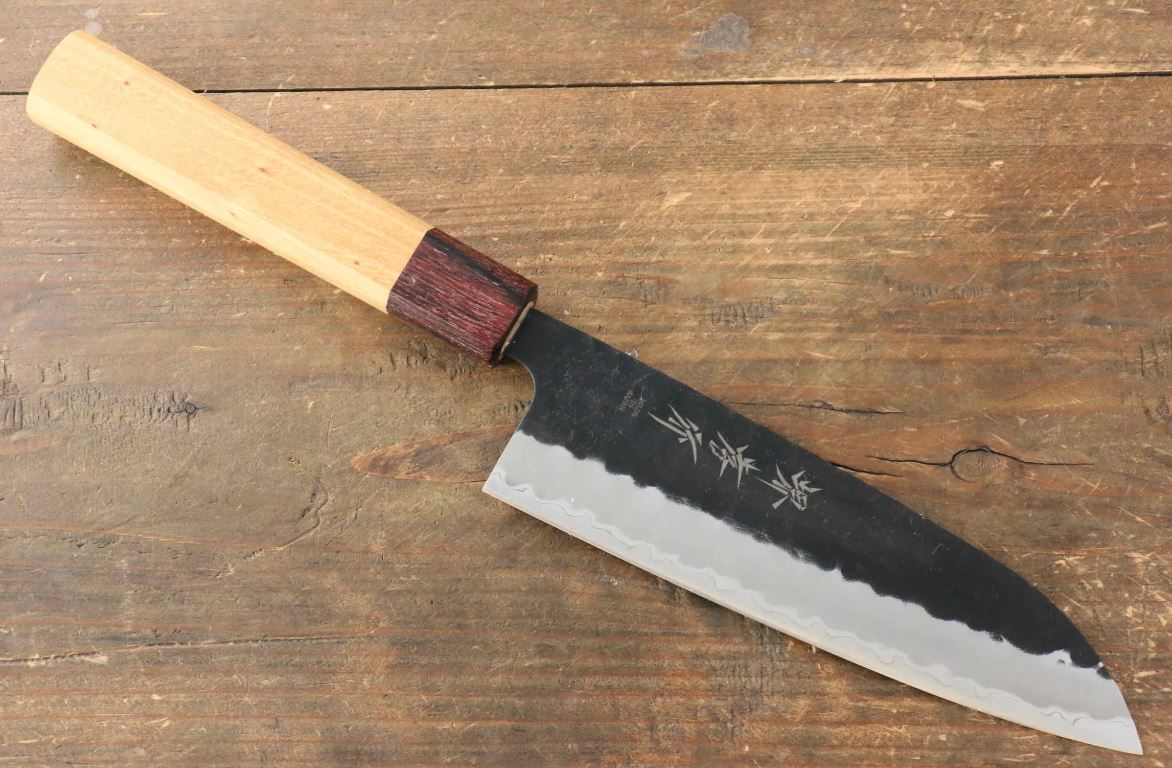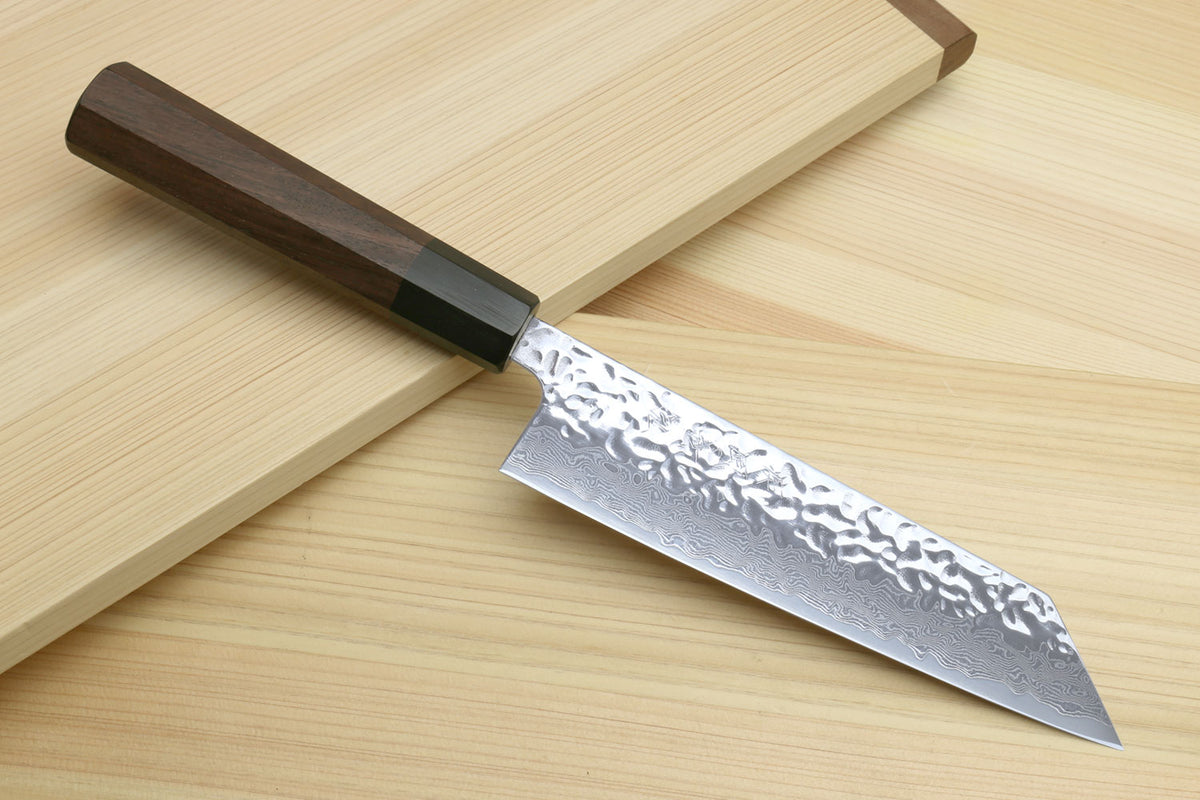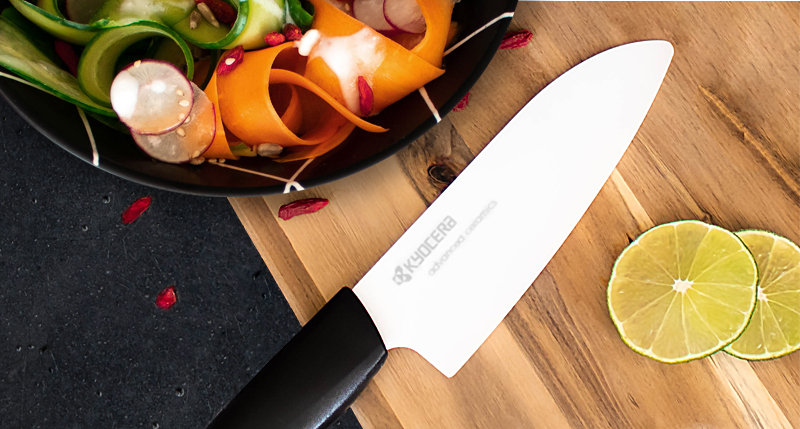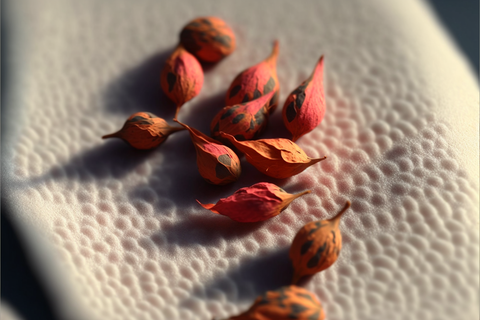
Buying Japanese Knives: Our Simple Guide
If you're a fan of cooking, then you know that having a great knife is important. Sure, you can get by with a cheap knife from the grocery store, but it's not going to be the same as having a quality knife that's designed for precision cutting. That's where Japanese knives come in.
Japanese knives are some of the best in the world, and they're perfect for anyone who wants to up their cooking game. In this guide, we'll go over everything you need to know about Japanese knives, including the different types of knives, the best places to buy them, and how to care for them.
Japanese Knife Styles
There are a variety of different styles of Japanese knives available, each designed for a specific purpose. The most common types of knives are the gyuto (chef's knife), the santoku (utility knife), and the petty (paring knife).

Santoku knives are slightly shorter and have a more pronounced curve, making them ideal for slicing and dicing. Santoku knives are all-purpose knives that can be used for everything from slicing meat to chopping vegetables. They typically have a blade that's between 5 and 7 inches long.

Gyuto knives are the most versatile and can be used for a variety of tasks, from slicing and dicing vegetables, to mincing meat. Gyuto knives are similar to Santoku knives, but they're usually a bit longer, with a blade that's between 8 and 10 inches long.

Petty knives are smaller still and are perfect for delicate tasks such as peeling and paring fruit and vegetables. Since they are are smaller knives they are typically used for delicate tasks such as peeling fruit or removing seeds from vegetables.

Other less common types of Japanese knives include the nakiri (vegetable knife), the deba (butcher's knife), and the yanagiba (sashimi knife).
Nakiri knives are designed specifically for chopping vegetables, and have a rectangular blade about 6-8 inches long that is perfect for making clean, precise cuts.

Deba knives are heavy and robust, making them ideal for butchering and filleting.

Yanagiba knives are long and thin, making them the perfect choice for slicing raw fish.
Japanese Knife Materials
Japanese knives are made with a variety of different materials, including carbon steel, stainless steel, and ceramic. Carbon steel knives are generally considered to be the better option, as they're sharper and easier to sharpen. However, they're also more likely to rust and require more maintenance than stainless steel knives.

Stainless steel knives, on the other hand, are more resistant to rust and corrosion, but they're not as sharp and can be more difficult to sharpen.

Ceramic knives are extremely sharp, but they're also more fragile than knives made with other materials.

Ultimately, the decision of which material to choose is a matter of personal preference.
If you're looking for a knife that is both sharp and resistant to rust, you may want to consider a carbon steel knife with a stainless steel coating. This type of knife is often more expensive than a knife made from only one of these materials, but it offers the best of both worlds.
When choosing a Japanese knife, it's important to consider what you'll be using it for. If you're going to be doing a lot of chopping, a Nakiri knife is a good option. If you're looking for an all-purpose knife, a Santoku or Gyuto knife is a good choice. And if you're looking for a smaller knife to use for delicate tasks, a Petty knife is a good option.

No matter what type of knife you choose, be sure to care for it properly. This means keeping it clean and dry, and storing it in a safe place when not in use. With proper care, your knife will last for many years.
Japanese Knife Brands
There are a number of great Japanese knife brands to choose from, each with their own strengths and weaknesses. Some of the most popular brands include Shun, Global, and Tojiro. If you're looking for a high-quality knife that will last a lifetime, then we recommend going with a brand like Shun or Global. However, if you're on a budget, then Tojiro is a great option.
How to Care for Your Japanese Knife
Caring for your Japanese knife is important if you want it to last a lifetime. The most important thing to remember is to never put your knife in the dishwasher, as this will damage the blade. Instead, always hand-wash your knife with warm water and mild soap, and dry it immediately after. It's also important to sharpen your knife regularly, as this will keep the blade in good condition and prevent it from becoming dull. Finally, always store your knife in a safe place when not in use, such as in a knife block or sheath.
To sharpen your knife, you'll need to use a sharpening stone. First, soak the stone in water for about 5 minutes. Then, place the stone on a flat surface and hold the knife at a 20-degree angle to the stone. Use a back-and-forth motion to sharpen the blade. Most Japanese knives only have a bevel (angle) on one side and the other side is flat. This makes for very accurate and sharp knives, so make sure you only sharpen one side and make sure the other side is flat and smooth. After a few minutes, you should have a sharp, clean blade.

If you take proper care of your Japanese knife, it will last you a lifetime. With proper care, your knife will stay sharp and in good condition, making it a valuable and useful tool in your kitchen.
The Best Places to Buy Japanese Knives
Now that you know the different types of Japanese knives, you're probably wondering where you can get your hands on one. Here are three of the best places to buy Japanese knives:
If you're looking for a high-quality Japanese knife, then any of these three places would be a great option. You can't go wrong with any of them. That being said, the best experience would be to visit a knife shop here in Japan to be able to truly feel and experience the knife before you buy it. You will find most large cities have a particular area dedicated to kitchen goods and you can find amazing knife shops there.
How to Care for Your Japanese Knife
Even the best Japanese knife will eventually start to show signs of wear and tear. That's why it's important to know how to properly care for your knife. Here are a few tips:
Never put your knife in the dishwasher. Instead, wash it by hand with warm water and soap and be sure to dry your knife with a towel. Because of the high carbon steel of traditional knives, they can easily rust if left to dry with moisture still on them.

Use a sharpening stone to keep your knife sharp. It's best to do this every few weeks.
Store your knife in a safe place where it won't get damaged. A knife block or sheath is a good option.
If you follow these simple tips, your Japanese knife will last for many years to come.
The Benefits of Owning a Japanese Knife
There are many benefits to owning a Japanese knife, including:
Precision cutting: Japanese knives are designed for precision cutting, which means you'll be able to get clean, smooth cuts every time.
Durability: Japanese knives are made from high-quality materials that make them extra durable. With proper care, your knife will last for years.

Improved cooking: A quality knife will make cooking easier and more enjoyable. You'll be able to prepare food more quickly and easily, and you'll be able to create restaurant-quality dishes at home.
Other benefits of owning a Japanese knife include the following:
They are beautiful: Japanese knives are not only functional, but they are also beautiful. They make a great addition to any kitchen.
They are a great investment: Japanese knives are a great investment because they will last for many years.
Something A Little Different...
Although you may be reading through this article looking only for a kitchen knife, you may find yourself interested in our Japanese Tanto Knives as well. A common accessory for the samurai of old.



